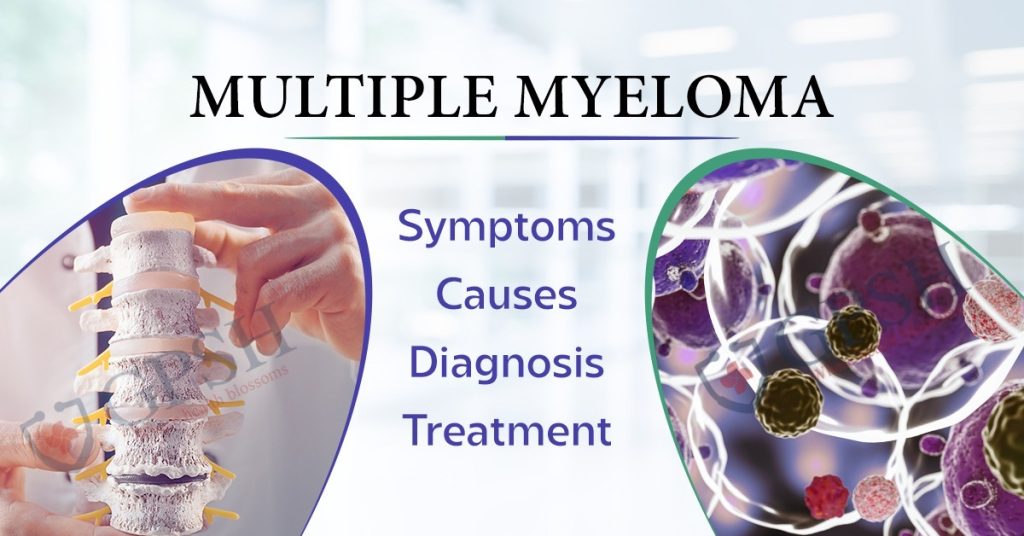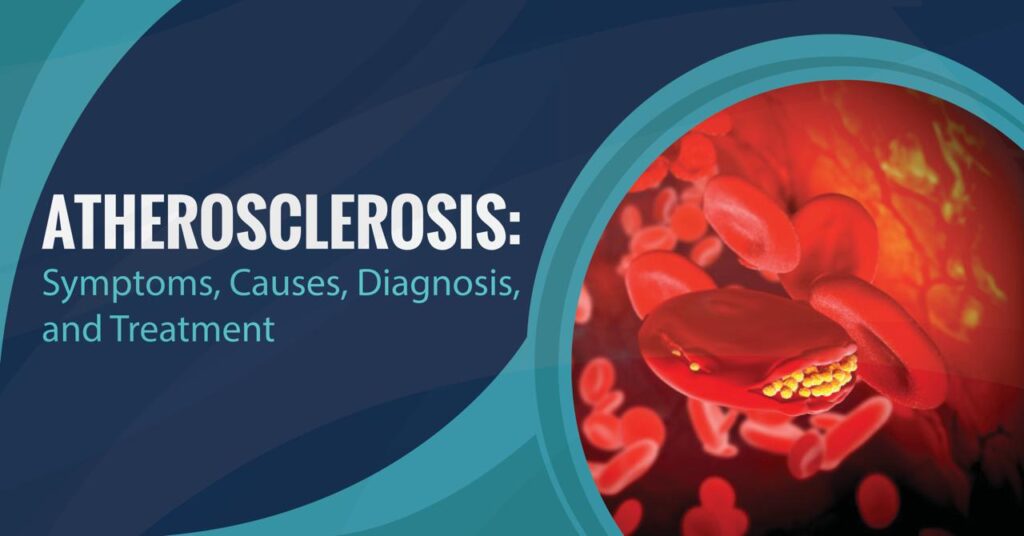What is Multiple Myeloma?
Multiple myeloma, often referred to simply as myeloma, is a type of cancer that originates in the plasma cells, a specific type of white blood cell found in the bone marrow. Plasma cells are a crucial part of the immune system as they produce antibodies, also known as immunoglobulins, that help the body fight infections.
In multiple myeloma, there is an abnormal proliferation of plasma cells within the bone marrow. These abnormal plasma cells, often called myeloma cells, crowd out healthy blood cells, impair the production of normal antibodies, and release excessive amounts of a protein called monoclonal immunoglobulin (M protein) into the bloodstream. These processes can lead to various health problems and complications.
Multiple myeloma is considered a malignancy of the bone marrow and is part of a group of cancers known as hematological malignancies or blood cancers. It primarily affects the bones and bone marrow but can also have systemic effects on the body, impacting various organs and systems.
Causes of Multiple Myeloma
The exact cause of multiple myeloma remains uncertain, but it is believed to result from a combination of genetic, environmental, and lifestyle factors. Here are some factors that may contribute to its development:
● Genetic Factors: Genetic predisposition is a risk factor, especially for individuals with a family history of the disease. Specific genetic mutations related to plasma cell function have been identified in some cases.
● Age: Most cases occur in people over 65 due to age-related changes in bone marrow and the immune system.
● Gender and Race: It is slightly more common in men and more prevalent among African Americans.
● Radiation Exposure: Prolonged exposure to ionizing radiation, like radiation therapy or occupational exposure, increases the risk.
● Chemical Exposures: Some studies suggest links between exposure to chemicals like benzene and pesticides and an increased risk.
● Obesity: Obesity may be a risk factor, although the exact mechanisms are still under investigation.
● Immune System Dysfunction: Abnormalities in the immune system may contribute to myeloma development.
You Can Also Read:- Aspergillosis: Types, Causes, Symptoms, Diagnosis & Treatment
Symptoms of Multiple Myeloma
Symptoms can vary, and some individuals may have none in the early stages. Common symptoms include:
● Bone Pain: Persistent pain in the back, ribs, or hips is common and can be severe.
● Fatigue: Unusual tiredness or weakness is common due to anemia or the disease’s impact on the body.
● Frequent Infections: Weakened immune function increases susceptibility to infections.
● Kidney Problems: Myeloma proteins can damage the kidneys, causing increased thirst, frequent urination, and leg and ankle swelling.
● Anemia: Low red blood cell count leads to weakness, shortness of breath, and pale skin.
● Hypercalcemia: High blood calcium levels result in excessive thirst, frequent urination, constipation, and confusion.
● Weight Loss: Some individuals experience unintentional weight loss.
● Nerve Symptoms: Myeloma-related proteins may affect nerves, causing numbness, tingling, or weakness in extremities.
● Bleeding: Blood clotting problems can lead to easy bruising, nosebleeds, and other bleeding issues.
● Digestive Symptoms: Rarely, it affects the gastrointestinal tract, causing abdominal pain, diarrhea, or constipation.
● Swollen Lymph Nodes: Enlarged lymph nodes may be felt in some cases.
● Unexplained Fevers: Fever without a clear cause may occur due to infection or immune-related issues.
Diagnosis of Multiple Myeloma
Diagnosis involves a series of medical tests and evaluations:
● Clinical Evaluation: Includes a medical history and physical examination to assess symptoms.
● Blood Tests: Essential for diagnosis, including CBC, blood chemistry panel, serum protein electrophoresis (SPEP), and urinalysis.
● Bone Marrow Biopsy: A sample from the hipbone or another site is examined to assess plasma cell percentage and abnormalities.
● Imaging Studies: X-rays, CT scans, MRI scans, and PET scans identify bone lesions and disease extent.
● Cytogenetic and Molecular Testing: Analyzes myeloma cell genetics and molecular characteristics.
● Staging: Determines the disease’s extent and impact on the body.
● Additional Tests: May be needed for organ function evaluation, complications assessment, and treatment planning.
You Can Also Read:- When to Take Creatine? Best Time to take Creatine
Risk Factors of Multiple Myeloma
Multiple myeloma has various risk factors:
● Age: It’s more common in older adults, with increasing risk with age.
● Gender: Men are slightly more likely to develop it than women.
● Race and Ethnicity: More prevalent in African Americans and less common in Asian Americans.
● Family History: Individuals with a family history have an increased risk due to genetic predisposition.
● Monoclonal Gammopathy of Undetermined Significance (MGUS): MGUS increases the risk of developing multiple myeloma over time.
● Radiation Exposure: Prolonged exposure to ionizing radiation is a risk factor.
● Chemical Exposures: Some studies suggest links to benzene and pesticide exposure.
● Obesity: Obesity may be a risk factor, though mechanisms are still studied.
● Immune System Dysfunction: Certain immune system disorders increase the risk.
● Personal History of Plasma Cell Disorders: Prior conditions like solitary plasmacytoma may increase risk.
Complications of Multiple Myeloma
Multiple myeloma can lead to various complications:
● Bone Complications: Bone pain, pathologic fractures, and osteoporosis are common due to bone breakdown.
● Kidney Damage: Myeloma proteins can harm the kidneys, leading to kidney failure and anemia.
● Hypercalcemia: Elevated blood calcium levels can result in excessive thirst and confusion.
● Infections: Weakened immunity leads to an increased risk of infections.
● Neurological Complications: Myeloma-related proteins can affect nerves, causing numbness, tingling, or weakness.
● Bleeding and Clotting Problems: Abnormal blood clotting can cause easy bruising and nosebleeds.
● Hyperviscosity Syndrome: High protein levels can thicken blood, leading to confusion and bleeding.
● Secondary Cancers: Myeloma patients may be at a higher risk of developing other cancers.
● Immunodeficiency: Myeloma cells in the bone marrow can weaken the immune system.
● Heart and Lung Problems: In rare cases, myeloma proteins can affect the heart and lungs.
● Complications from Treatment: Treatments may have their complications, including infections and organ damage.
You can also read:- Ehrlichiosis: Causes, Symptoms, Risk Factors, Diagnosis and Treatment
Treatment of Multiple Myeloma
Treatment depends on individual circumstances, disease stage, and overall health. Common treatment options include:
● Chemotherapy: Uses drugs to kill or slow myeloma cell growth.
● Targeted Therapy: Targets specific proteins or processes in myeloma cells.
● Stem Cell Transplantation: High-dose chemotherapy followed by stem cell transplant.
● Immunotherapy: Enhances the immune system’s response to myeloma cells.
● Radiation Therapy: Targets bone areas affected by myeloma to reduce pain and fractures.
● Bisphosphonates: Strengthens bones and reduces fracture risk.
● Corticosteroids: Used with other treatments to manage symptoms and inflammation.
● Plasmapheresis: Removes excess myeloma proteins in hyperviscosity syndrome.
● Clinical Trials: Offer access to experimental therapies.
● Supportive Care: Manages symptoms and complications.
Prevention of Multiple Myeloma
Prevention is challenging due to uncertain causes, but some general guidelines may help reduce the risk:
● Maintain a Healthy Weight: Obesity is associated with an increased risk; maintain a balanced diet and regular exercise.
● Dietary Choices: Consume a diet rich in fruits, vegetables, whole grains, and lean proteins.
● Limit Exposure to Harmful Chemicals: Minimize exposure to known carcinogens like benzene and pesticides.
● Quit Smoking: Smoking is a risk factor for various cancers, including some hematological malignancies.
● Moderate Alcohol Consumption: Limit alcohol intake.
● Regular Exercise: Engage in regular physical activity to support overall health.
● Manage Chronic Conditions: Properly control chronic conditions like diabetes and immune disorders.
● Stay Informed: Know your family medical history.
● Participate in Clinical Trials: Consider participating in research to advance prevention and treatment.
Conclusion
In conclusion, multiple myeloma is a complex disease with various risk factors, symptoms, and complications. Early diagnosis and tailored treatment are essential for managing the disease effectively. While prevention is challenging, adopting a healthy lifestyle and minimizing exposure to risk factors can potentially reduce the risk of developing multiple myeloma. Regular communication with healthcare providers and participation in clinical trials are crucial for advancing knowledge and improving outcomes in multiple myeloma care.









